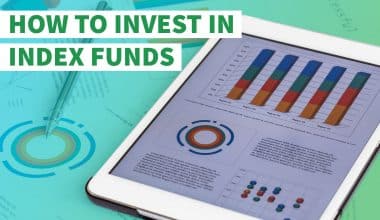An intriguing alternative to 9-to-5 employment is passive income, which can be earned with no effort and requires little time commitment. Investing is a viable option for those seeking passive income. However, investors should be aware of the risks involved in the market and that failing to diversify can result in heavy losses.
To lessen financial exposure, investors practice diversification by allocating capital across a wide range of asset categories. An investment portfolio that is well-balanced will generate a passive income that is less susceptible to market swings.
How to make $100,000 work for you in passive income is the topic of this essay. In the end, you’ll know more about how to build a diverse portfolio that serves your needs as an investor.
Recognizing Different Types of Assets
If you want to invest $100,000 in a diverse manner in order to generate passive income, you need to have a working knowledge of the various asset classes at your disposal. These are some of the most typical types of assets:
- Stocks: Stocks, as ownership stakes in a corporation, carry both the promise of huge returns and the danger of even greater losses. Stocks can be bought and sold on stock exchanges, and their value can rise or fall depending on factors like the success of the underlying firm and the overall economy.
- Bonds are a form of financial security that can be issued by any legal entity (including governments and corporations). They are less risky than equities but typically give smaller returns. Interest rates are just one element that might affect bond prices.
- Rental properties, commercial structures, and undeveloped land are all examples of real estate. There are substantial risks associated with real estate investments, such as changes in property values, tenant turnover, and market volatility, but the potential rewards of rent or capital appreciation upon sale can be substantial.
- Commodities, hedge funds, private equity, and other assets are only some of the many types of “alternative investments” available. While the likes of diversification and non-correlated returns may be attained through these investments, it is widely accepted that they are riskier and less liquid than more conventional options.
Diversifying one’s portfolio over a number of asset categories can help mitigate risk and boost profits. Investments in stocks, bonds, and property, for instance, would make up a diversified portfolio.
Portfolio Diversification
If you’re an investor who wants to create passive income while keeping your downside risk to a minimum, you need to diversify your holdings. Investments in stocks, bonds, real estate, and alternative assets all make up the many components of a diversified portfolio. Investors can mitigate their exposure to risk and increase the likelihood of achieving stable long-term returns by diversifying their holdings across a wide range of asset types. When constructing a diversified portfolio, keep in mind the following guidelines.
- Allocating your capital across several asset classes is a crucial part of creating a diversified investment strategy. Common asset classes include stocks, bonds, real estate, and alternatives, as we’ve just examined. Investors can reduce their exposure to market risk and increase the likelihood of achieving consistent returns over time by spreading their money across a variety of asset classes.
- The next step after deciding on an asset allocation is choosing specific investments within each asset class. Considerations including the investment’s quality, estimated return, and risk should be made before making a final decision. Risk can also be reduced by spreading your investments across other asset categories. In the stock market, for instance, you may spread your money across a number of different companies, sectors, and even countries.
- The asset allocation of your portfolio may become uneven over time as the performance of individual investments varies. You should check in on your portfolio on a regular basis and rebalance it as necessary to keep your asset allocation in line with your objectives and comfort level with risk.
- Think about the tax ramifications: The tax implications of your assets should be one of your primary concerns while constructing a diverse portfolio. The tax rates you pay or the tax breaks you qualify for will vary with the sort of investment you make. Consult a financial planner or tax expert to make sure your investment strategy fits in with your long-term tax objectives.
Asset allocation, investment selection, and rebalancing must all be given serious thought before a diversified portfolio can be constructed.
Constant Portfolio Evaluation and Modification
You still have a lot to accomplish after you’ve established a diverse investment portfolio. Maintaining a portfolio that is in harmony with your investment objectives requires constant attention and rebalancing. You may reduce exposure to lose, boost your long-term investment returns, and adjust to shifting market conditions or personal needs by regularly monitoring and altering your portfolio. In this section, we’ll go over some of the most important factors to keep in mind when keeping an eye on your portfolio and making adjustments as needed.
- The strength and weaknesses of your portfolio, as well as any shifts in your investment aims or tolerance for risk, can be better gauged with periodic portfolio assessments. Your portfolio should be reviewed at least annually, and more frequently during periods of market volatility.
- As we’ve already established, rebalancing is the process of making minor adjustments to your portfolio’s asset mix to keep it in line with your investment objectives and comfort level. Risk can be reduced and long-term rewards maximized through rebalancing.
- You should think about the tax ramifications of your investments as you track and make changes to your portfolio. Selling investments at a loss may help you offset gains in other parts of your portfolio, and investing in tax-deferred accounts may help you get the most out of your money over the long term.
- Last but not least, it’s crucial that you always know what’s going on in the market and the economy as a whole. You may use this information to make better investment decisions and fine-tune your portfolio so it continues to help you achieve your financial objectives.
Conclusion
A wise method to grow long-term wealth while limiting risk is to create a diversified portfolio for passive income with $100,000. If you follow the advice in this article, you’ll be able to build a diversified portfolio that accounts for your tax situation and other factors that affect returns, as well as your investment goals and your level of risk tolerance. Keep in mind that building a diverse portfolio is an ongoing process that needs to be checked and tweaked frequently.






